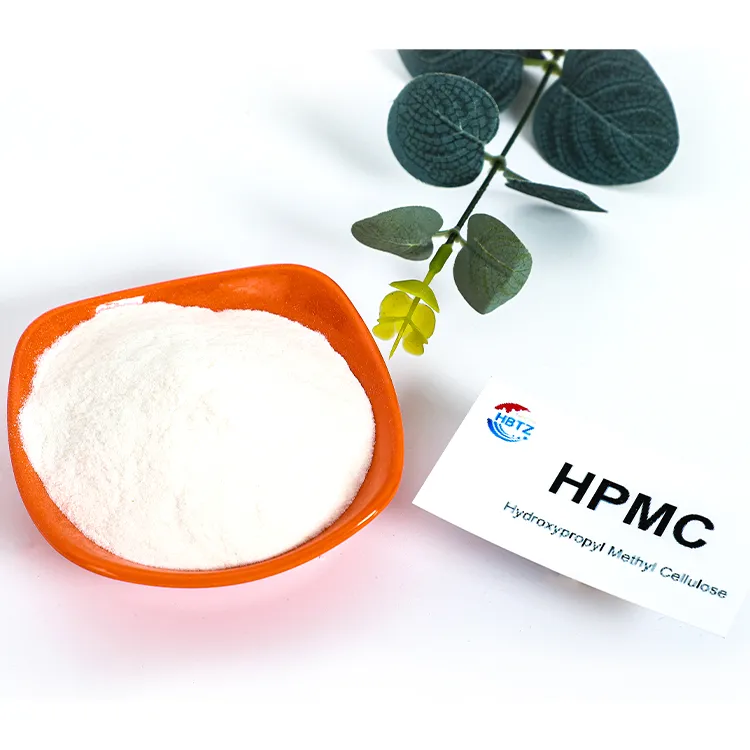
Hydroxypropyl Methyl Cellulose - Hebei Tangzhi Technology Co., Ltd. | Viscosity Control, Thermal Stability
Hydroxypropyl Methyl Cellulose (HPMC), with the CAS number CAS 9004-65-3, is a high-performance multifunctional thickener and stabilizer. This innovative polymer has become a cornerstone in various industries, including construction, medicine, food, and daily chemicals. Developed by Hebei Tangzhi Technology Co., Ltd., HPMC exemplifies the company's commitment to delivering cutting-edge materials that meet global standards. This article explores the features, technical specifications, applications, and the company's background, while incorporating authoritative references to ensure credibility.
Company Background: Hebei Tangzhi Technology Co., Ltd.
Hebei Tangzhi Technology Co., Ltd., a leading manufacturer of specialty chemicals, has established itself as a trusted name in the industry. With a focus on innovation and quality, the company provides solutions that address the evolving needs of global markets. Their expertise in polymer chemistry is evident in products like HPMC, which are designed to enhance performance and sustainability across multiple sectors. For more information about the company's mission and capabilities, visit their official website.

Image 1: HPMC 00 product sample

Image 2: HPMC packaging options
Key Features and Advantages of HPMC
HPMC is a semi-synthetic polymer derived from cellulose, offering a unique combination of properties that make it indispensable in modern applications. Its versatility stems from its ability to act as a thickener, stabilizer, and film-former. Below are the key features and advantages of HPMC:
- Viscosity Control: HPMC provides precise viscosity adjustment, ensuring optimal flow properties in formulations.
- Thermal Stability: It maintains structural integrity across a wide temperature range, making it suitable for both hot and cold environments.
- Water Solubility: HPMC dissolves easily in water, facilitating its use in aqueous systems.
- Biocompatibility: Its non-toxic and non-irritating nature makes it ideal for pharmaceutical and food applications.
- Environmental Sustainability: Derived from renewable resources, HPMC supports eco-friendly manufacturing practices.
Technical Specifications of HPMC
| Parameter | Specification |
|---|---|
| Chemical Name | Hydroxypropyl Methyl Cellulose |
| CAS Number | 9004-65-3 |
| Appearance | White to off-white powder |
| Viscosity (2% aqueous solution) | Varies by grade (e.g., 2000-200000 mPa·s) |
| Moisture Content | ≤5% |
| pH Value (1% solution) | 6.0-8.0 |
| Particle Size | Typically 80-120 mesh |
Applications in Diverse Industries
HPMC's adaptability makes it a critical component in numerous applications. Here's an overview of its use cases:
Construction Industry
In construction, HPMC is used as a thickener and water retention agent in cement-based products. It enhances workability, reduces water loss, and improves the adhesion of mortars and plasters. For example, HPMC is commonly found in tile adhesives, rendering compounds, and self-leveling underlayments.
Pharmaceuticals
The pharmaceutical sector benefits from HPMC's biocompatibility and film-forming properties. It is used as a binding agent in tablet formulations and as a gelling agent in oral suspensions. Additionally, HPMC's controlled release properties make it ideal for extended-release drug delivery systems.
Food Industry
In food applications, HPMC serves as a stabilizer and emulsifier. It prevents separation in products like salad dressings, dairy alternatives, and frozen desserts. Its ability to improve texture and shelf life makes it a valuable ingredient in processed foods.
Daily Chemicals
HPMC is widely used in personal care and household products. It acts as a thickener in shampoos, lotions, and toothpaste, enhancing product consistency and user experience. Its emollient properties also contribute to the smoothness of skincare formulations.
Why Choose Hebei Tangzhi Technology Co., Ltd.?
Hebei Tangzhi Technology Co., Ltd. stands out in the HPMC market due to its commitment to quality and innovation. The company adheres to stringent standards (as outlined by the National Institute of Standards and Technology, NIST) to ensure product reliability. Their state-of-the-art manufacturing facilities and rigorous testing protocols guarantee that HPMC meets the highest performance benchmarks. For more details about their quality assurance processes, visit their company page.
Industry Standards and Certifications
HPMC produced by Hebei Tangzhi Technology Co., Ltd. complies with international standards such as ISO 9001 and REACH regulations. These certifications ensure that the product is safe, sustainable, and suitable for global markets. The company's adherence to measurement standards (as emphasized by NIST) further underscores its dedication to precision and excellence.
Conclusion
Hydroxypropyl Methyl Cellulose (HPMC) is a multifunctional polymer that has revolutionized various industries. Its unique properties, combined with Hebei Tangzhi Technology Co., Ltd.'s expertise, make it a reliable choice for manufacturers worldwide. Whether in construction, pharmaceuticals, food, or daily chemicals, HPMC continues to drive innovation and efficiency. For inquiries about HPMC or to explore hpmc suppliers, visit the company's official website.
References
National Institute of Standards and Technology (NIST). Retrieved from https://www.nist.gov/.
Hebei Tangzhi Technology Co., Ltd. (2025). Hydroxypropyl Methyl Cellulose (HPMC). Retrieved from https://www.tangzhihpmc.com.
-
Reliable Powdered Cellulose Supplier: Quality, Sustainability & InnovationNewsNov.24,2025
-
Find Trusted Microfibrillated Cellulose Suppliers for Sustainable Industrial SolutionsNewsNov.24,2025
-
Leading Methocel Suppliers: Quality, Innovation & Sustainability in Methylcellulose SupplyNewsNov.23,2025
-
Reliable Hydroxyethylcellulose Suppliers for Industry & Sustainability | Tangzhi HPMCNewsNov.23,2025
-
Top Ethyl Cellulose Supplier – Quality, Sustainability, and Industrial SupportNewsNov.23,2025
-
Trusted CMC Powder Suppliers for Food, Pharma & Industrial Use | Tangzhi HPMCNewsNov.22,2025





















